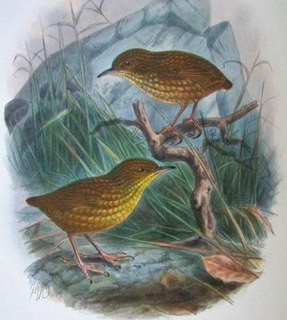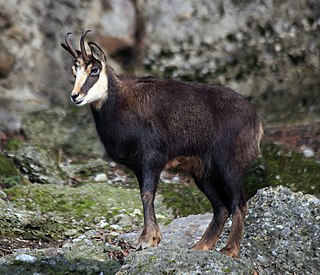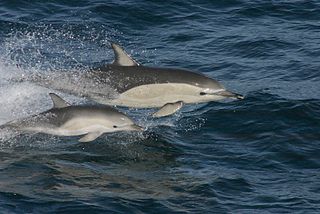 W
WPrior to human settlement, the mammals of New Zealand consisted entirely of several species of bat, and several dozen marine mammal species. The Māori brought the kurī and kiore in about 1250 CE, and Europeans from 1769 onwards brought the pig, mice, two additional species of rats, weasels, stoats, ferrets and possums and many other species, some of which cause conservation problems for indigenous species.
 W
WCats are a popular pet in New Zealand. Cat ownership is occasionally raised as a controversial conservation issue due to the predation of endangered species, such as birds and lizards, by feral cats.
 W
WThe chamois is a species of goat-antelope native to mountains in Europe, from west to east, including the Cantabrian mountains, the Pyrenees, the Alps and the Apennines, the Dinarides, the Tatra and the Carpathian Mountains, the Balkan Mountains, the Rila - Rhodope massif, Pindus, the northeastern mountains of Turkey, and the Caucasus. The chamois has also been introduced to the South Island of New Zealand. Some subspecies of chamois are strictly protected in the EU under the European Habitats Directive.
 W
WThe common brushtail possum is a nocturnal, semi-arboreal marsupial of the family Phalangeridae, native to Australia, and the second-largest of the possums.
 W
WThe short-beaked common dolphin is a species of common dolphin. It has a larger range than the long-beaked common dolphin, occurring throughout warm-temperate and tropical oceans, including the Indian Ocean although in smaller numbers than other places they are found. There are more short-beaked common dolphins than any other dolphin species in the warm-temperate portions of the Atlantic and Pacific Oceans. It is also found in the Caribbean and Mediterranean Seas. The short-beaked common dolphin is also abundant in the Black Sea, Gulf of Mexico, and Red Sea. They follow the gulf stream up to Norwegian waters. Seldom do any short-beaked dolphin venture near the Arctic.
 W
WThe dusky dolphin is a dolphin found in coastal waters in the Southern Hemisphere. Its specific epithet is Latin for "dark" or "dim". It is very closely genetically related to the Pacific white-sided dolphin, but current scientific consensus holds they are distinct species. The dolphin's range is patchy, with major populations around South America, southwestern Africa, New Zealand, and various oceanic islands, with some sightings around southern Australia and Tasmania. The dusky dolphin prefers cool currents and inshore waters, but can also be found offshore. It feeds on a variety of fish and squid species and has flexible hunting tactics. The dusky dolphin is known for its remarkable acrobatics, having a number of aerial behaviours. The status of the dolphin is unknown, but it has been commonly caught in gill nets.
 W
WHector's dolphin is one of four dolphin species belonging to the genus Cephalorhynchus. Hector's dolphin is the only cetacean endemic to New Zealand, and comprises two subspecies: C. h. hectori, the more numerous subspecies, also referred to as South Island Hector’s dolphin; and the critically endangered Māui dolphin, found off the West Coast of the North Island.
 W
WMāui dolphin or popoto is a subspecies of the Hector's dolphin —New Zealand's only endemic cetacean species. Māui dolphin are only found off the west coast of New Zealand's North Island, and are now one of the rarest and smallest dolphin subspecies globally. The latest population size estimate for the Māui dolphin subspecies estimated 63 individuals of age one year or older. Both the Māui dolphin and South Island Hector's dolphin are threatened by commercial fisheries, including set-netting and trawling, recreational netting, and disease including toxoplasmosis and brucellosis. Low food availability may also be an issue for Māui dolphin, which may increase their susceptibility to climate change.
 W
WThe European hare, also known as the brown hare, is a species of hare native to Europe and parts of Asia. It is among the largest hare species and is adapted to temperate, open country. Hares are herbivorous and feed mainly on grasses and herbs, supplementing these with twigs, buds, bark and field crops, particularly in winter. Their natural predators include large birds of prey, canids and felids. They rely on high-speed endurance running to escape predation, having long, powerful limbs and large nostrils.
 W
WThe fallow deer is a species of ruminant mammal belonging to the family Cervidae. It is native to Europe, but has been introduced around the world.
 W
WThe kunekune is a small breed of domestic pig from New Zealand. Kunekune are hairy with a rotund build, and may bear wattles hanging from their lower jaws. Their colour ranges from black and white, to ginger, cream, gold-tip, black, brown and tricoloured. They have a docile, friendly nature, and are now often kept as pets.
 W
WKurī is the Māori name for the extinct Polynesian dog. It was introduced to New Zealand by the Polynesian ancestors of the Māori during their migration from East Polynesia in the 13th century AD. According to Māori tradition, the demigod Māui transformed his brother-in-law Irawaru into the first dog.
 W
WThe Polynesian rat, Pacific rat or little rat, known to the Māori as kiore, is the third most widespread species of rat in the world behind the brown rat and black rat. The Polynesian rat originated in Southeast Asia, and like its relatives, has become widespread, migrating to most of Polynesia, including New Zealand, Easter Island, and Hawaii. It shares high adaptability with other rat species extending to many environments, from grasslands to forests. It is also closely associated with humans, who provide easy access to food. It has become a major pest in most areas of its distribution.
 W
WThe stoat or short-tailed weasel, also known as the ermine, is a mustelid native to Eurasia and North America. Because of its wide circumpolar distribution, it is listed as Least Concern on the IUCN Red List.
 W
WStoats were introduced into New Zealand to control introduced rabbits and hares, but are now a major threat to the native bird population. The natural range of the stoat is limited to parts of the Northern Hemisphere. Immediately before human settlement, New Zealand did not have any land-based mammals apart from bats, but Polynesian and European settlers introduced a wide variety of animals. Rarely, in Southland, the fur of stoats has been reported to turn white, being the fur known as ermine, which adorns royal robes.